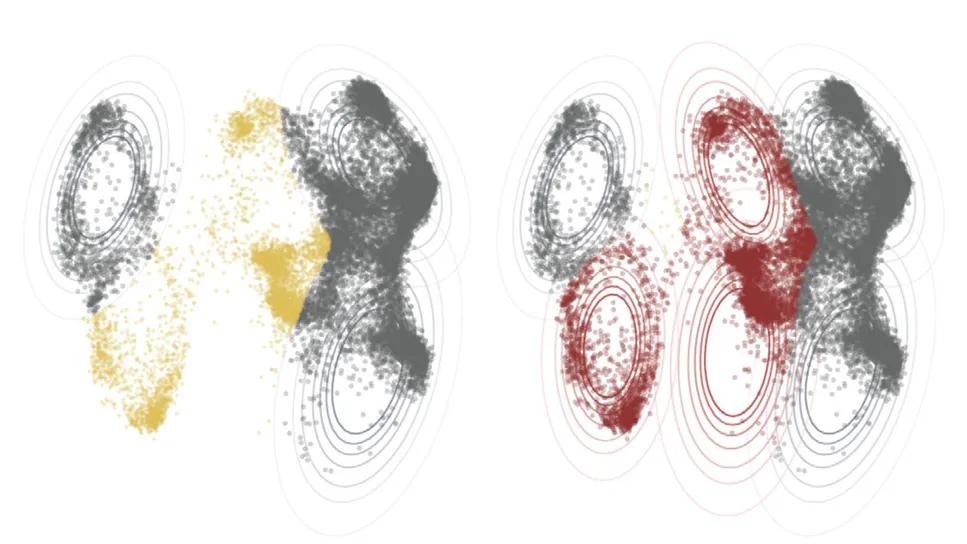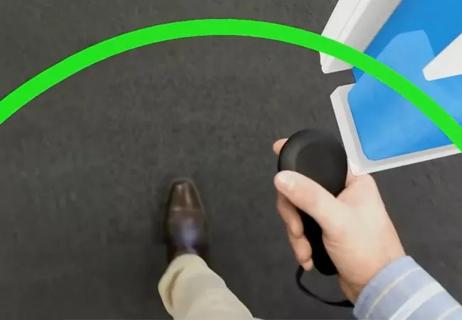Novel approach dramatically reduces the need for real-world data

Computer vision models trained on physics-based simulated gaits can recognize a variety of neurological syndromes as accurately as gait models that are based on real data obtained from patients with the conditions. So found a team of investigators from the United States and Japan who developed synthetic gait models using artificial intelligence (AI) and tested their performance against models based on video and accelerometer data from patients with cerebral palsy, dementia and Parkinson’s disease.
Advertisement
Cleveland Clinic is a non-profit academic medical center. Advertising on our site helps support our mission. We do not endorse non-Cleveland Clinic products or services. Policy
The research, recently published in Nature Communications (2025;16[1]:6188), has significant implications for creating clinically useful gait analysis tools and expanding them to uncommon conditions, as well as to patients of different ages, various comorbidities, and early in the disease course, all for which real data are usually scarce.
“Gait changes are a very important feature for detecting many neurological conditions, especially in early stages, but clinicians currently just ‘eyeball’ the patients and do not measure the gait quantitatively,” says James Liao, MD, a study author and movement disorders neurologist in the Center for Neuro-Restoration at Cleveland Clinic. “We’d love to be able to use computer-assisted techniques to quantify the gait changes and then analyze them. Unfortunately, it takes a huge amount of data to train these computer vision models, so they have not been translated into routine clinical use.”
The team, which included researchers from IBM, created synthetic gaits using musculoskeletal simulation models. New gaits were developed based on changes in musculoskeletal parameters and AI training. They also created models based on a combination of synthetic and real data.
The novel gaits were compared with gaits based wholly on real-data models derived from four different clinical datasets, as follows:
Advertisement
The AI-trained synthetic gait models estimated a variety of gait parameters with a similar level of accuracy as gait models trained on real videos. For instance, gait speed, step length, and step time can be estimated with a Pearson’s correlation coefficient of 0.88, 0.8, or 0.97, only using synthetic training data. It would take 299 real videos to achieve the same level of performance as the synthetic data, for estimating gait speed. For some gait parameters, the models trained on real data could not achieve the same level of performance as the synthetic-trained models.
Synthetic models that were augmented with real data enhanced performance in multiple areas, including dementia diagnosis, severity grading of cerebral palsy and longitudinal prediction of cognitive decline.
“These findings have important implications. They reduce the need for large amounts of real data from patients with different clinical conditions,” says Dr. Liao. “A collection of hundreds of real-data videos augmented with synthetic gait data could provide the same reliability of gait parameters for a variety of neurological syndromes as a set of thousands of patient videos.”
Dr. Liao emphasizes that the high performance of synthetic data-based models in this study does not eliminate the need to collect real data for developing gait-analysis models. “Rather, synthetic gaits will dramatically improve the quality of gait analysis from the relatively small clinical datasets we currently have available. This is going to be especially true for rare neurological conditions.”
Advertisement
The article notes that the approach can be used in research to explore associations of gait parameters with clinical outcomes, and has multiple potential applications. These include:
Dr. Liao cautions that synthetic gait models are not yet ready for use for diagnosis and patient management, but “this approach should get us there faster.”
Dr. Liao is looking forward to Cleveland Clinic’s new neurological building, opening in 2027, which will include a gait assessment done at check-in for each patient. “It will be similar to how vital signs are taken before each visit,” says Dr. Liao. Data such as gait velocity, step width, step length, symmetry, and variability metrics will be collected with cameras and computer vision techniques (without the need for wearable detection devices), then instantly quantified and analyzed in context with the patient’s medical history.
“Our new system will enable us to collect a large amount of real data to strengthen our synthetic gait models,” says Dr. Liao. “Someday soon, computer-assisted techniques will detect gait changes that signal cognitive decline or increased falls risk and alert clinicians when there may be a new neurological condition occurring that needs further attention. This analysis will be complete and presented to clinicians by the time the patients walk into the exam room.””
Advertisement
Dr. Liao adds that the potential applications of their approach go beyond gait analysis. The same approach could be applied to analysis of hand movements, head movements, or other functional activities.
The image at the top of this article, first published in Nature Communications, represents pose sequences extracted from videos via UMAP. Contours represent the density estimation of clusters resulting from using a Gaussian mixture model for synthetic gaits: fixed-camera/front-view (F), fixed-camera/back-view (B) and rotating-camera/side-view (R) with normal (N) and abnormal (A) parameters (FN, FA, BN, BA, RN, and RA, respectively). Each dot represents a single video of real data. Black and red indicate data that fall within 95% of Gaussian distribution of synthetic gaits with normal and abnormal parameters, respectively, and yellow indicates data that do not fall into any distributions of synthetic gaits.
Yamada Y, Kobayashi M, Shinkawa K, Bilal E, Liao J, Nemoto M, Ota M, Nemoto K, Arai T. Utility of synthetic musculoskeletal gaits for generalizable healthcare applications. Nat Commun. 2025 Jul 4;16(1):6188. doi: 10.1038/s41467-025-61292-1. PMID: 40615372; PMCID: PMC12227639.
Advertisement
Advertisement

Technology helps address gait abnormality in normal pressure hydrocephalus and more

Novel ‘assessment center’ will be a partner in care by serving as an engine of structured data collection

Heightened awareness of this rare disorder may lead to better diagnosis and treatment progress

Mounting evidence of possible shared genetic predisposition

Recently launched first-of-kind study aims to address an unmet therapeutic need

Large NIH-funded investigation is exploring this understudied phenomenon

Advances in genomics, spinal fluid analysis, wearable-based patient monitoring and more

Case study of radial-to-axillary nerve transfer for tumor-related deltoid nerve injury